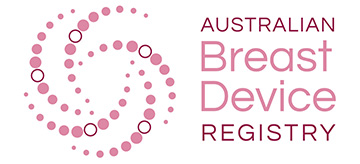ABDR releases 2020 Annual Report
December 22, 2021
Australian Breast Device Registry (ABDR) Releases 2020 Annual Report
The ABDR team is pleased to release the nation’s most detailed report on reconstructive and cosmetic breast procedures involving 62,521 patients, 71,054 surgeries and 132,205 devices.
The Commonwealth funded ABDR was established in 2015 with the purpose to monitor the safety of devices and drive improvements of quality of care for breast device recipients.
As the registry continues to mature, the ABDR will provide increasing amounts of detailed information to improve patient outcomes.
The year 2020
Despite the COVID pandemic, 12,958 new patients enrolled in the ABDR in 2020, around 1000 more than the previous year. Five hundred and forty-three surgeons operating at 295 public and private hospitals contributed details of 3,814 reconstructive and 9,496 cosmetic procedures to the registry in 2020.
This report is separated into cosmetic and reconstructive surgeries. Reconstructive surgeries include breast cancer and risk-reducing procedures, and to correct developmental deformities.
The majority of procedures were device insertions, although these have declined slightly over the last five years, with explants slightly increasing as a proportion of total procedures over this time.
- 21% of patients in the ABDR have had reconstructive surgery: 73% cosmetic surgery
- Only 1% of patients opted out of being involved in the registry, indicating high acceptance
Notably, this report reflects regulatory trends: use of textured implants declined by around 50% over five years for reconstructive and cosmetic procedures.
About reconstructive surgery in Australia
- The average age of device insertion for post-cancer reconstruction was around 50 years, risk-reducing reconstruction 42 years and to correct developmental deformities 25 years
- In 2020, 62% of implants were smooth and 38% textured
- In the past five years, matrix was used in more than 50% of direct-to-implant insertions for post-cancer reconstruction and risk-reducing reconstructions and in 27% of procedures using breast tissue expanders
- Of the complications associated with revisions, the most common were capsular contracture (34%) device malposition (24%) and device rupture (18%)
- At five years, 13% of risk-reducing procedures, 12% for post-cancer procedures and 8% for developmental procedures had revision surgery due to complications
About cosmetic surgery in Australia
- The average age of implant insertion was 31 years
- In 2020, more than 64% of implants were smooth, with the remainder textured
- Of the complications associated with revisions, the most common were capsular contracture (36%), device rupture (23%) and device malposition (19%)
- At five years, 3% of cosmetic procedures had revision surgery due to complications
The ABDR acknowledges and thanks Australians who enable the registry to retain their surgery details to help drive improvements in patient outcomes. It also acknowledges and thanks supporting surgeons, registrars, nursing and administration staff from private and public hospitals that contribute to the registry and the Commonwealth Department of Health for funding this important health initiative.
The ABDR is a world-leading clinical quality registry led by Monash University, with the support of Australian Society of Plastic Surgeons (ASPS), Australasian College of Cosmetic Surgery and Medicine (ACCSM), Breast Surgeons of Australia and New Zealand Inc. (BreastSurgANZ) and the Therapeutic Goods Administration (TGA).
Read the full report here.

